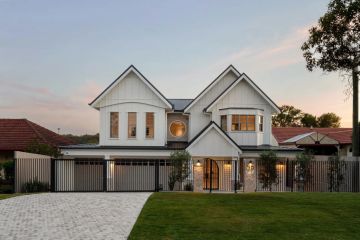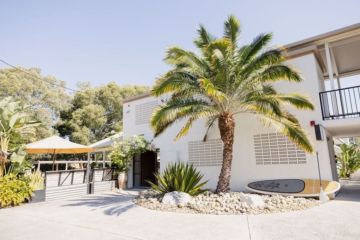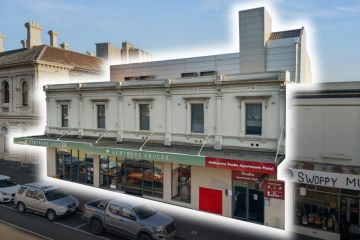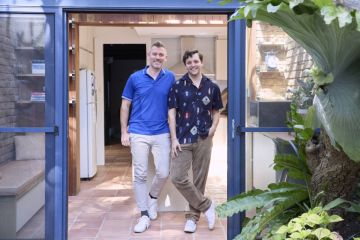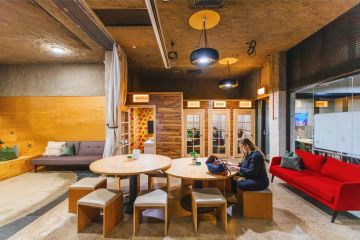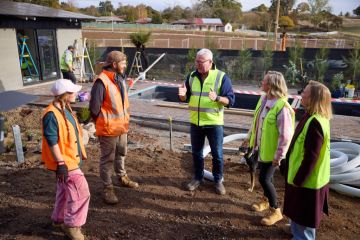'Big and gregarious': The weatherboard Peekaboo House on a wedge-shaped block
When Carter Williamson principal Shaun Carter returned to a Balmain street to look at extending an 1880s brick Victorian on a “funny wedge-shaped block” six metres higher at the back than the front, what came back to him, with such intensity that he could recall the smell of industry in the suburb’s pre-gentrification era, was “a flood of memories of going to Nan’s”.
At the other end of the row of six semi-detached terraces was the house his mother had grown up in.
It was opposite the park where during school holidays he’d played for hours on the swings and slides.
So, the play on light, privacy, the inevitable Carter Williamson insignia of architectural novelty, and even the name of the project all deliver on a whimsical theme of fondness.
In Peekaboo House, that weird block allowed the double-level extension to shift sideways behind the old house and for a steel-framed, forward-projecting window seat on the upper level to have discreet overviews‚ peeping rights‚ to the park and street.
“It’s a quiet, reflective place, where kids can sit with their laptops or flop in bean bags,” he says.
In a suburb as intensely settled as what he calls “old Balmain”, the degree of seclusion for the new rear wing is uncanny, as it is shielded and surrounded by high walls.
- Related: The home designed on a ‘wonky square’
- Related: The family home of developer Bear Agushi
- Related: The commission of an architect’s career
This allowed the new kitchen-living-sitting lower level to be comprehensively glazed, “and for the lovely folded doors to open out into private courtyards”.
“We dissolved the ground floor to become so open and big and gregarious that it recently handled a gathering of 120 people with ease,” he says.
The converse, the “wrapped up” parts of the four-bedroom house, are the private frontage and, on the upper floor of the addition, the new master bedroom, en suite, study and the Peekaboo.
Clad in weatherboard, the home’s internal floor plan wraps around a partially curving stair void.
The interior and exterior are done out in brilliant whites of different hues, but in Sydney’s dazzling daylight, how would you discern by what degrees?
The whiteness unites as much as the void, says Carter.
“We put a void into many of our houses and here it holds the living room and brings joy to the room.”
It’s another part “of the play on the ideas of heavy and light”.
We recommend
We thought you might like
States
Capital Cities
Capital Cities - Rentals
Popular Areas
Allhomes
More
